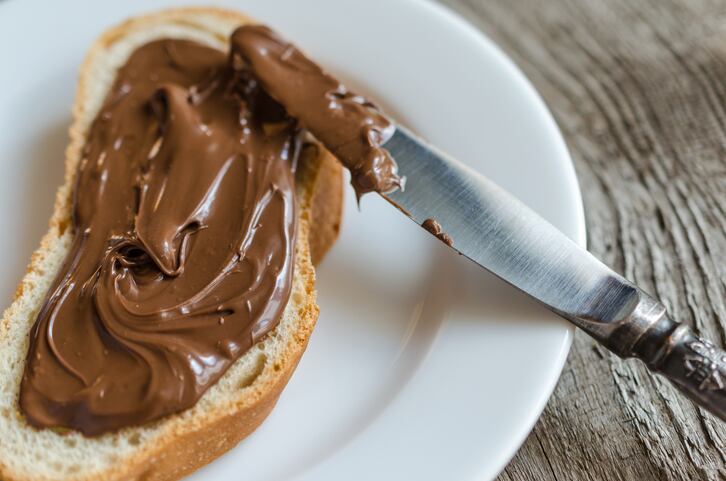In the open access study published in Nutrients, researchers compared the impact of three nutrition labels - the Evolved Nutrition Label (ENL), Traffic Lights and Nutri-Score - on the portion size selection of less healthy food products. They also compared these to a control situation where the same products had no front-of-pack label.
The researchers found that the Nutri-Score led to the lowest portion size, followed by Traffic Lights while the ENL showed “inconsistent” results across food categories.
“Indeed, this front-of-pack label did not lead to the selection of a lower portion size compared to no label, except for cheeses," they wrote. "Moreover, for sweet spreads the ENL appeared to lead consumers to choose larger portions compared to no label and other front-of-pack labels."
For spreads in particular, the Nutri-Score led to a decrease of 0.15 portions, corresponding to 2.25 g and the Traffic Light led to a decrease of 0.03 portions (0.45 g) but ENL led to an increase of 0.11 portions (1.65 g) compared to no label.
Even if the differences are small, if a spread is eaten every breakfast for one year, it could have “a substantial impact”, the researchers write. For instance, the NutriScore would decrease consumption by 822 g a year while the ENL label would increase by 603 g.
“With the ENL, consumers are potentially misled about the real nutritional quality of the product and would feel less restraint, resulting in the selection of larger portion sizes, which contradicts the initial objective of the ENL.”
Nutrient thresholds
Nutri-Score was developed by French researchers, and has been adopted as the official nutrition label in France and, recently, Belgium, and gives one colour for the whole product.
The Traffic Light label, developed by the Food Standard Agency and used extensively in the UK and Ireland, gives separate colours for the sugar, salt, fat and saturated fat, meaning one product may have a green, amber and red light.
The Evolved Nutriton Label is based on the Traffic Light logo but uses different nutrient thresholds.
For products in small portions (set at less than 60 g), the ENL sets the threshold for the red/amber boundary at 15% of the reference intakes for a portion of food for while the Traffic Light label sets it at 25% of the reference intakes for 100 g of food.
“Operationally, this modification leads to more products with amber colours than red colours for less healthy foods,” write the authors of this study, specifically for products such as biscuits, chocolate bars, candies and chocolate spreads.
The three labels below, for instance, would appear on the same chocolate spread.

The ENL’s standardised portion sizes are “not necessarily realistic compared to current dietary practices”, write the authors. “Our results advocate for the presentation of nutritional information per 100 g to help consumers limit overconsumption of less healthy foods.”
“In contrast, the ENL seems to be confusing and misleading on the nutritional quality of products, and may encourage larger portion size selection for some less healthy products, such as sweet spreads."
Governments in EU member states can officially endorse certain nutrition labels but they cannot make them mandatory as this would go against single market rules.
However, there are calls for the Commission to bring in a pan-EU mandatory label, prompting efforts from various lobbies to promote certain labels over others.
Last year, Mondelēz, Nestlé, PepsiCo, The Coca-Cola Company, Unilever and Mars came together and launched the ENL. It has been criticised for failing to give unhealthy foods red lights - such as Nutella, which contains 90% sugar and fat - and Mars later pulled out, saying it lacked credibility and consensus.
Co-authors of this Nutrients study include Serge Hercberg, who developed the NutriScore label, and Mike Raynor, who helped develop the UK's Traffic light label.
25,000 participants
For this study, the researchers showed over 25,000 French participants product images of sweet biscuits, cheeses and sweet spreads, and asked them to select the portion they would like to eat: one, two, three or four biscuits or 15 g, 30 g, 45 g and 60 g for cheese and sweet spreads. These are the standardised portions as recommended by the ENL companies.
The foods were chosen because they are commonly eaten in France, cover all three meals and are of low nutritional value.
“No additional information was provided, in particular the amount in grams corresponding to the photograph was not provided, to not influence consumers’ choice, in particular as the multiple traffic light and ENL provide the portion size within the label.”
A spokesperson for the ENL companies said they welcomed the study and were currently reviewing its main findings.
They also welcomed the study's focus on the link between front-of-pack and portion size selection, the spokesperson added.
"However, we believe that more research is needed on this topic in real-life settings before reaching key conclusions. In this respect, we are confident that with the real-life trials of ENL across a number of EU member states, we will be able to bring meaningful and relevant consumer insights, including on portions, to the EU discussions on front-of-pack nutrition labelling."
The ENL companies are calling on the Commission to set portion sizes, as required by the EU Food Information to Consumers (FIC) Regulation. "To date, there are no standardised or regulated portion sizes across Europe, resulting in a lack of harmonization of portions across many food categories."
It says consumer surveys show the public prefer nutrition information per portion rather than per 100 g.
Source: Nutrients
“Impact of Front-of-Pack Nutrition Labels on Portion Size Selection: An Experimental Study in a French Cohort”
Published online 8 September 2018, doi: 10.3390/nu10091268
Authors: Manon Egnell, Emmanuelle Kesse-Guyot, Pilar Galan, Mathilde Touvier, Mike Rayner, Jo Jewell, João Breda, Serge Hercberg and Chantal Julia

